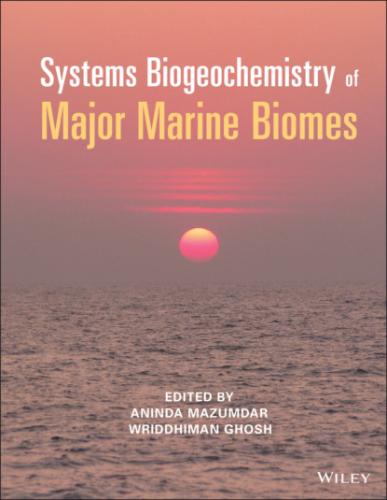The AOM involves a syntrophic consortium of sulfate‐reducing bacteria and methanotrophic archaea (Boetius et al., 2000; Knittel and Boetius, 2009). The AOM process results in the formation of SMTZ, which is a redox interface in the sediment where porewater SO4 2– and CH4 intersect and are depleted to near‐zero levels (Treude et al., 2005; Sultan et al., 2016). The depth of SMTZ depends on the organic matter availability, oxygen exposure time (OET) of organic matter, flux of CH4 and SO4 2–, and the activity of sulfate‐reducing bacteria and methanotrophic archaea and bioturbation (Niewöhner et al., 1998; Hong et al., 2014; Komada et al., 2016; Lin et al., 2016; Hu et al., 2017). The AOM process at the SMTZ leads to high pore water alkalinity owing to bicarbonate (HCO3 ‐) and hydrogen sulfide (HS‐) production. The sulfate reduction rates in marine sediment pore waters are controlled by the availability of labile organic matter, SO4 2– concentration, bottom water temperature (OET), bioturbation, bacterial distribution, and abundance (Aller, 1994; Kristensen, 2000; Hedges and Keil, 1995; Nierop et al., 2017; Jessen et al., 2017). Depth integrated sulfate reduction rates have been reported to be maximum around continental margins (Bowles et al., 2014), apparently linked to the higher deposition/preservation of organic carbon in these areas of the global ocean (Dean et al., 1994; Littke et al., 1997; Van der Weijden et al., 1999; Böning et al., 2004; Seiter et al., 2004, 2005; Rasiq et al., 2016; Dale et al., 2015; Fernandes et al., 2018).
Bottom water DO depletion and high preservation of reactive organic matter within the OMZ sediment led to considerably higher sulfate reduction rates. The higher sulfate reduction rate is associated with higher porewater NH4 + and dissolved inorganic carbon (DIC) concentrations and shallow SMTZ (Mazumdar et al., 2009, 2012; Fernandes et al., 2018; Fernandes et al., 2020).
Studies from the Oman margin sediments by Pedersen and Shimmield (1991) show depletion of porewater SO4 2–concentration (<1 mM) within 50 to 100 meters below seafloor (mbsf). Furthermore, Passier et al. (1997) (from Oman margin), Schenau et al. (2002) (from Pakistan and Oman margins), and Van der Weijden et al. (1999) (Oman margin) reported low sulfate reduction in the sediments. Lower sulfate reduction in the Oman margin sediment is also supported by a very low concentration of reduced sulfur compounds (Fe‐sulfide) relative to total organic carbon content (Emeis et al., 1991). The low sulfate reduction rate in the ASOMZ sediments may result from the incorporation of sulfur into the organic matter, which renders the organic matter refractory (Passier et al., 1997; Lückge et al., 1999; Schenau et al., 2002; Law et al., 2009). In contrast, Law et al. (2009) attributed low sulfate reduction rates (0–0.45 mmol m‐2 d–1) from the Pakistan margin sediments to the dominance of other metabolic pathways (Fe cycling) or lack of reactive organic matter. The low sulfate reduction rates in the ASOMZ sediments compared with other upwelling regions (e.g. Namibian and Peruvian margins) is attributed to the low availability of labile organic matter and supply of reactive Fe in the sediments (Lückge et al., 1999; Law et al., 2009; Naik et al., 2017). See Table 1.1 for depth‐integrated sedimentary SRRs from different OMZ regions of the global Ocean.
Table 1.1 Summarizes the calculated depth‐integrated sedimentary sulfate reduction rates (SRRs) from different oxygen minimum zones (OMZs) regions of the global ocean.
| Area | OMZ water depth (mbsl) | SRR (mmol cm–2 yr–1) | Reference |
|---|---|---|---|
| Eastern Arabian Sea OMZ | 200–1200 | 0.0008–0.0113 | Fernandes et al. (2018) |
| Pakistan margin | 200–1200 | 0.00036–0.01642 | Law et al. (2009) |
| Oman margin | 200–1000 | 0.000035–0.00011 | Pedersen and Shimmield (1991) |
| Off central Chile | 70–450 | 0.3504–1.09135 | Ferdelman et al., (1997), Thamdrup and Canfield (1996) |
| Off central Peru | 50–650 | 0.3212–1.25195 | Fossing (1990) |
| Off NW Mexico | 150–800 | 0.011315–0.06862 | Hartnett and Devol (2003) |
1.4. SEDIMENTARY SULFIDIZATION AND SULFURIZATION
Hydrogen sulfide produced during sulfate reduction in sediments is diffused from the microbial cell into the surrounding pore water and is trapped in the
